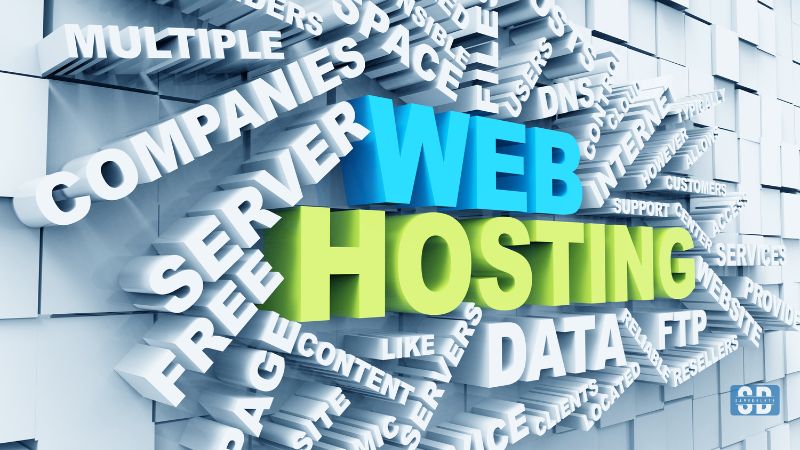After the invention of the
internet, shopping online has become the easiest thing to do sitting with your
legs sprawled across the couch. This has also, in a way, motivated tons of
retailers to move their shop online where they can connect to a lot of
customers and make a profit. At the same time, they too can reduce their costs
of rent and other miscellaneous expenses by operating from a website or app.
Merchants and entrepreneurs all
over the world are flocking towards the e-commerce path for all the reasons
stated above. As per the Internet retailer, e-commerce sales globally, have
increased by 18% in 2018, with consumers spending a whopping $2.86 trillion
online. In the United States of America alone, e-commerce sales spiked 15% in
2018, showing 14.3% of total retail sales.
However, it is not just the
financial benefits that make e-commerce the next big thing to invest in. Apart
from earning an income through sales, there is one other crucial fact that can
draw future sellers to starting a business online. It is the flexibility and
freedom that a physical store cannot provide. An online store lets you operate
from anywhere in the world, you can grow at your own pace, and you get to be
your boss.
Even if you already operate a
physical brick and mortar store, incorporating e-commerce to this mix can only
bring in more benefits to your business. All this will help boom your business
since being omnipresent enables you to reach out to a broader audience leading
to making your products easily accessible and most importantly, generate more
substantial profits.
In the guide below, we’ll discuss
the steps that every aspiring e-commerce merchant needs to know to prepare and
open a new online store from scratch.
What Do You Need Before Starting Your Online Store?
Before you can begin your journey
towards your e-commerce success, there are a few specifics you need to have in
place. Let’s start with the technical components:
A Domain Name
Your domain name is more than an
internet address that people use to find your store. It is the online identity
of your business. Having a domain name automatically transports the status of
your business to a more professional standard, which will give you instant
credibility with your audience. At the same time, it will work wonders for you
if you select a name that matches your brand and is easy for your customers to
remember.
Don’t know how to select the
right name and register your domain name? Our guidelines can help you point in
the right direction.
A Web Host
A web host is a place where your
store will be “live” online, acting as a digital workplace for your content
like your files and images. There are a lot of domain registrars and store
builders available now that offer a variety of hosting services directly, so it
is often easy to check this off your to-do-list.
An SSL Certificate
An SSL certificate is short for
Secure Sockets Layer that is essentially a security protocol that lets your
customers create a safe and encrypted pathway between their browser and your
online store. This will be useful when it comes to accepting payments but will
not hurt your website. Nowadays, many web hosts can provide the SSL certificate
for you.
Now comes the most obvious thing:
Products to Sell
An online store, like any other
store, will only work if you have the products to sell. So, before you intend
on opening an online store, you need to decide what kind of products you intend
to sell there. There’s a lot of thinking that goes into the product to be set
up online, and the below questions can help you narrow down the products:
- Do you want to sell your homemade products?
- How much are you willing to spend on them to
produce the product?
- At what price will you sell it to the customer?
- How much inventory are you prepared to keep on
hand?
- How is your product different from the others
already available in the market?
You can also join hands with a
third-party manufacturer or wholesaler and focus on drop shopping. Drop
shopping is where you don’t have to maintain an inventory of your own. But,
when a customer shops for a product from your store, you need to forward that
order to the third party who will package and ship the item to the customer on
your behalf.
A Store Builder
A store builder is a platform
that you can use to design and build out your e-commerce store. There is a
variety of different options to choose from now, so you need to pick the right
builder which is the right combination of features for your business and also
is available at a cost that fits right into your budget.
By the end, we will look at a few
questions you can consider as you’re searching for the right online store
builder.
STEP 1: Deciding on the Product to Sell Online
If you’ve already decided on what
you intend to sell online or if you wish to sell your product be it a line of
clothing, a mobile app or anything in between, then that is an excellent start
for you. But if you’re still hunting for a great idea to strike you there a few
things you need to keep in mind as you keep searching.
Inspiration is Omnipresent
Most of the times the best ideas
come to you when you least expect it. You may be standing in line for coffee
when a great idea strikes you! Or maybe you see something while commuting that
gets your creative juices flowing. Be alert and keep an open mind because
inspiration is everywhere. Be prepared to make a note of any ideas that may
come to you no matter when or where it happens.
Find Out the Gaps Within the Market
The products that we make use of
in our everyday lives is a result of someone’s observation of the gap between
the need and unavailability to solve this need in the market. Then the person
made sure that this need is fulfilled by providing the requisite product to the
customer. Then another came and provided the same solution with a variation.
That is how our markets are now overflowing with choices for any need that you
name.
As you are progressing about in
your day, keep an eye out for common frustrations among people that they may be
experiencing. If you think there is a better way to help them out, then there
probably is. And you may be the person to discover it.
Think about Current and
Upcoming Trends
Many new sellers have found
success when they have linked their future trends to the past ones. In fashion,
for example, many have created a product that relates to classics and has thus,
worked out for them. Brainstorm the kind of products that can help you make
profits and are in trend right now. Also, think of ways that the pattern may
change so you can be the first one to market when the next big thing arrives.
Find a Product of your Passion
Your online store will demand for
a lot of your time and attention, and you may find yourself amidst them all of
your working days. Therefore, it will work in your benefit if you choose a
product that you are comfortable and excited to be around. If it is also
something that you are knowledgeable about it will work wonders for your
business since you will be able to sell it to your customers that much more
quickly. Having a product that you are excited to market will keep you on your
toes to run the store.
Learn what People are
Searching for Online
Google and Bing have become
equivalent to oxygen and help millions of people around the world to search the
internet for absolutely anything they desire. Some tools like Answer The Public
comes handy here. It accumulates all of the search queries that are received by
the search engines and makes it easy to identify the most popular searches
surrounding any keyword. This is a great way to be connected to the internet
and to find out product ideas that might generate plenty of organic traffic.
STEP 2: Choose an Online Store Builder
Once you’ve decided what you plan
on selling, it is time to find a place online to start selling it. As stated
earlier, even if you already have a brick-and-mortar store where you sell your
stuff, it is essential to have an online presence so you can reach your
customers no matter where they might be.
There are several online store
builders available in the market now like WooCommerce, Big Commerce and
PrestaShop, to name a few of them. Each of these offers a variety of
sophistication with its unique set of features. It doesn’t matter if you are
someone who is the tech-savvy type who wants to customize everything or someone
who is just looking for an easy-to-use option that lets you build an online
store as quickly as possible. Before choosing the right one for you, conduct
in-depth research on which one would suit you the best and would make the most
sense for your business.
Queries You Must Resolve
before selecting an Online Store Builder
Whether you are someone who is
into technical stuff or into what type of things you are planning to sell,
there are a bunch of questions that every would-be seller should be asking
before selecting an online store builder for their business
1. Does it encompass
both domain and hosting?
For any online store having a
domain name and hosting is very crucial to their business, which is why store
builders now come with these services to attract potential businesses. If you
have one that provides you with these services, then you are right on track.
Whereas if you don’t have these already, it is time you think and selects the
best online store builder that comes with these both since it is a real time
saver.
2. Will it connect to
marketplaces like Amazon or eBay?
At times, some merchants and
manufacturers already have an established brand identity. In which case, they
want their products to reach across all marketing channels. If you aim to reach
out to your customers beyond a single branded online storefront, select a store
builder that offers this level of reachability.
3. How will it look after
inventory management and shopping?
If you are into selling a
physical product, you will need help in keeping track of your inventory and
ship them out to customers promptly. Some store builders come with inbuilt
solutions to help you address these concerns others may require that you find
and install plugins.
4. Will it connect to social
media?
Social media has crossed the
reason for being a place only to connect and communicate and moved on to be a
great place to market your products. Facebook and Instagram, in particular,
have become critical marketing tools for online sellers. You must choose a
store builder that connects you to these mediums to maximize your marketplace
reach. Being related to social media will make it easy for you to promote and
share your products across all of these platforms. Apart from these, it is also
helpful to reach new audiences, build brand awareness for your product and
drive sales.
5. What other marketing tools
does it provide you access to?
Your relationship with your
customer should be beyond just buying and selling something from your online
store. As and when your business starts growing, you will need a few tools that
will remind your customers from time to time about the products they have added
to their cart but haven ordered yet. This can be done through notification
emails and confirmation messages. The confirmation messages can help the
shopper keep track of their package by letting them know that it has been
processed and is on its way.
6. Will, the store builder,
let you integrate with other apps or services that provide the features as
mentioned in question 4 and 5 if it does not incorporate the above features?
The online builder you choose may
not provide you with all the features you are looking out for, and that’s
perfectly okay! If you don’t come across an all-in-one solution that makes
sense for your business, other services on the market integrate with store
builders. They also provide you with a host of services that will help you get
the word out regarding your business and drive traffic to your online store.
STEP 3: CREATING YOUR ONLINE STORE
Now that you are done picking the
right store builder for you, it is time to start designing a virtual storefront
that resembles you and your uniqueness.
1. Choosing the right Domain
Name
A valid domain name will make it
easy for your existing customers to search for your store online. It will help
them recognize the brand online and define what your brand stands for, in case
of new customers. It also needs to be something that people can type, spell and
remember easily but at the same time, it shouldn’t be connected to trend or
slang to tie the name back to that place or time.
2. Finalizing a Template
Most of the store builders you
will find will be ones that come with readymade templates so that you can pick
one and start with your store right away. Go through the templates given to you
like choices and choose the best one that will suit your store and your brand
accordingly. Think about how you would want to design your store, what elements
would you like to include within the store, and how would you want your
customers to navigate through the store.
3. Time to Add your Products
and Begin Merchandising
When you begin building your
product pages, be sure to add within them the product name, price, colour,
dimensions, weight, and any other details that will help customers as they
begin scanning through your products to purchase. It will also be helpful to
the customer if you add a favourable description that will let them know more
about the product. Adding images to this description from various angles will
help the customer understand more regarding the product he/she is interested
in. It will, in a way, help to bring the item back to life.
4. Deciding which payment
methods you’ll accept
Nowadays, there a variety
of options made to the customer to make payments for their purchase. Some of
them are e-commerce merchants including credit cards (like Visa and MasterCard)
and digital payments services like PayTm, Paypal and GooglePay. Before you narrow
down which method would you like your customers to use, make it a point to read
up on all the types of payment services, how much each payment transaction will
cost you per sale and if there are any limitations to where they’re accepted
around the world.
5. Order Completion
Once you’ve added the products to
sell and decided on how your customer should be making payment for the same, it
is time to think how you be completing their order by delivering the product to
their customer.
When it comes to products like
e-books, art file, white paper or any other digital product that your customer
may purchase, you can provide a link to this product to download or email the
same to them right after they are buying it. But, when it comes to physical
products, you need to pick a shipping service and decide on which countries
will you be shipping to, what kind of packaging will you be using and how much
will you charge for shipping.
STEP 4: Test run your Online Store
There is only one chance at
making an excellent first impression. So, before you make your online store
available to for your customers, it is wise to test run your store to pick out
glitches, if any. Be sure to check every element right from shopping for a
product to the checkout section as a potential customer would.
1. View a preview of your
store on all electronic devices
It cannot be said how or when
your customer will want to shop on your online store or make a purchase for a
product. So, it is only wise to be prepared for anything that might come your
way. Before you begin to gather traffic for your store, check out for yourself,
how does it work on various browsers and devices. It will help you to confirm
that it is working how you had envisioned it to work. This will also help you
ensure that the store looks great and is easy to navigate for your audience,
whether they are visiting the store from their desktop, tablet or mobile
device.
2. Test run by placing an
order
Place a test order by following
the exact steps your customers would: visiting the store, adding an item to the
cart and then complete the purchase by placing the order.
As you are doing this, pay
attention to if the product has been priced correctly, that all of your
shipping options, fees and any other applicable taxes are clearly stated, and
that payments are successfully processed after the order is complete. If you
intend to offer any special promotions or discount codes for customers at
launch, you should make sure they work correctly as well.
3. Check if you received an
order confirmation mail
Once you place an order, head to
your inbox to check if you have a confirmation mail for the order placed. Also,
make a check if the details mentioned in the mail match with those you had
produced while placing the order.
4. Check out the refund
process
No matter how much your customer
purchases the products you offer them, there are going to be a few, who will
want to return the order back or may cancel at some point after placing the
order. If you test the refund process before your store is open to the public,
you’ll be ensuring that you are in a position to provide refunds quickly and
professionally should you need to do so in the future.
STEP 5: Begin marketing your Online Store
Once you gain confidence that
your store is now set to be presented to the customers, you can start by
thinking about how you would want to advertise your online store to increase
awareness and bring in traffic. Here, we will be outlining a few of the
marketing tools that can be particularly useful for online sellers.
1. Promotions on Social Media
When you are ready to open the
gates of your online store to the customers outside, you can begin by promoting
your store on Twitter, Facebook and Instagram or anywhere else your friends,
fan and other potential customers might be. You can even go a step ahead and
create a customized Facebook and Instagram ads to target specific segments of
people-like the people who live in a particular location or are within a
particular age group, for example. These ads can help highlight your store and
increase traffic for your store.
2. Offering discounts to bring
in more customers
Discounts are a great way to
promote your online store apart from attracting customers. Discounts also bring
in excitement among them and will encourage customers to take a step ahead and
make a purchase in your store. You can make a promo code available to your
initial customers that may provide them with a discount or free shipping the
next time they visit the store.
Another way to boost traffic is
by starting contests that provide the first 50 customers with the chance to win
a one-of-a-kind gift or an exclusive prize pack. So be creative with
introducing new things on your store that will help bring in more customers.
3. Build an email list
Email marketing is one of the
best ways to build and gain an audience, keep them engaged and gain valuable
insights that will help them grow in the future. Decide if you can add a signup
form to your website or collecting an email address from customers when they
make a purchase from your store, then sending out emails to thank your
customers for their support, share updates about the new additions to your
store and more. Later, you can review your email reports and learn what type of
content leads to more opens, more clicks and more purchases from your store.
4. Create Google remarketing
ads
Has it ever happened to you where
you visited a website and then started seeing ads for that website as you were
surfing the net? If this has happened to you, the chances are that you have
already encountered Google remarketing ads. This approach of marketing lets you
stay on the top-of-mind of your customers by displaying ads that target people
who have visited and navigated away from your store. It is an effective way to
bring in traffic and increase sales from your customers no matter where they
shop online.

















































































































